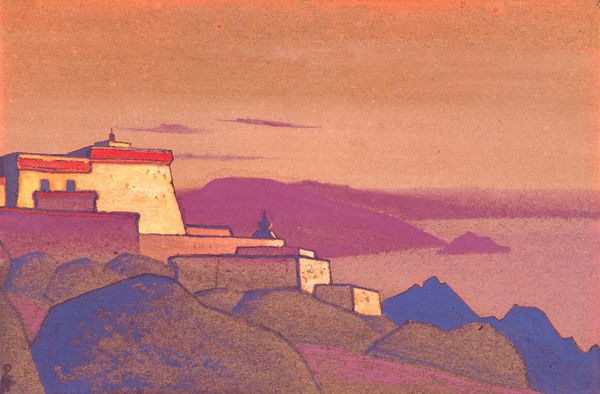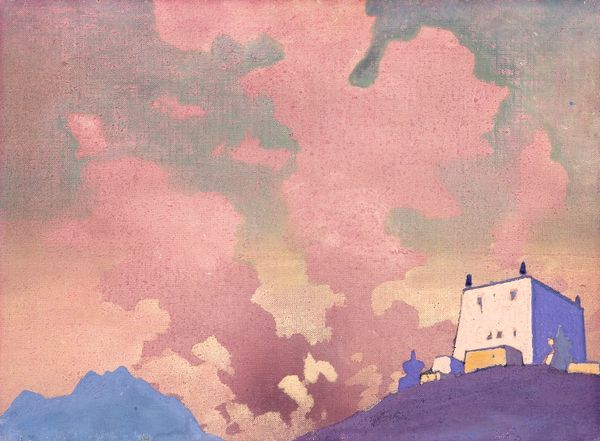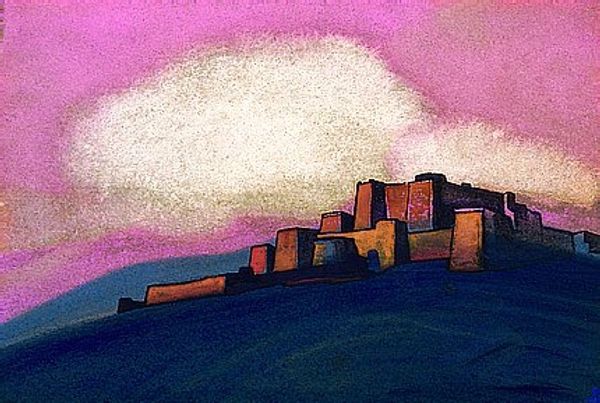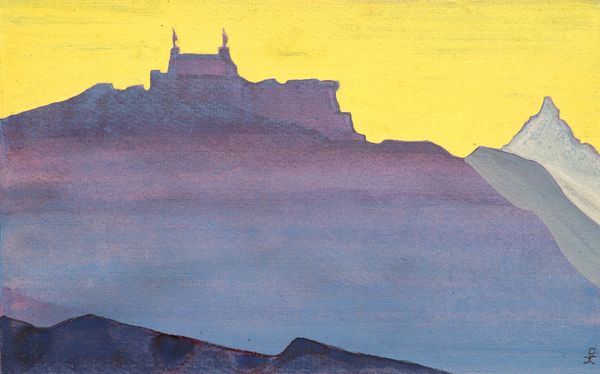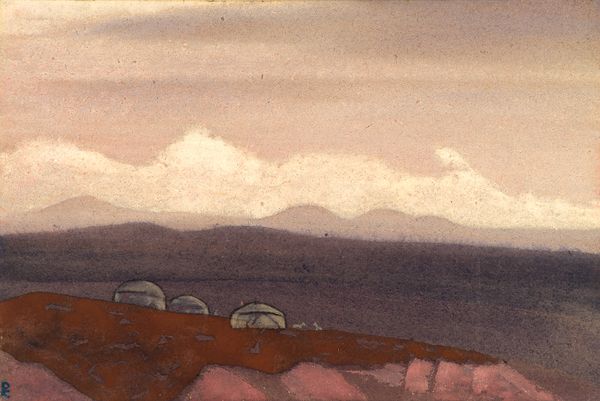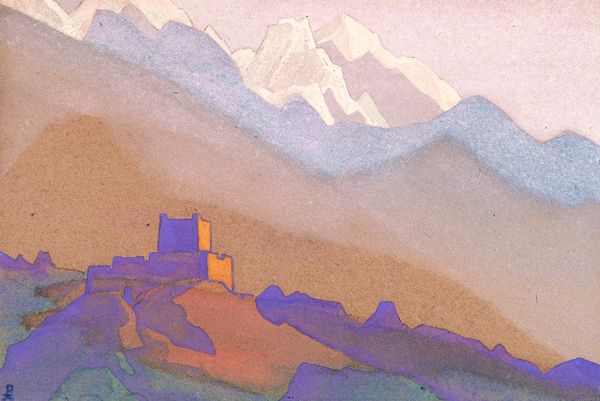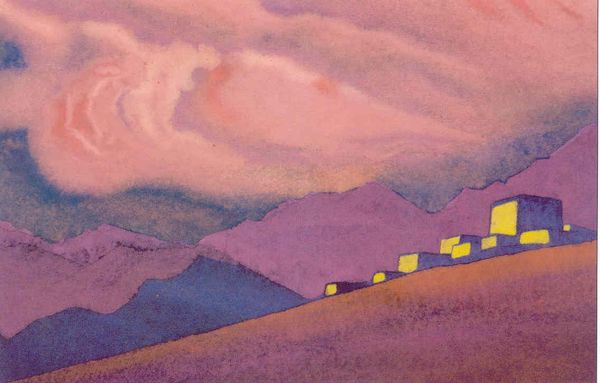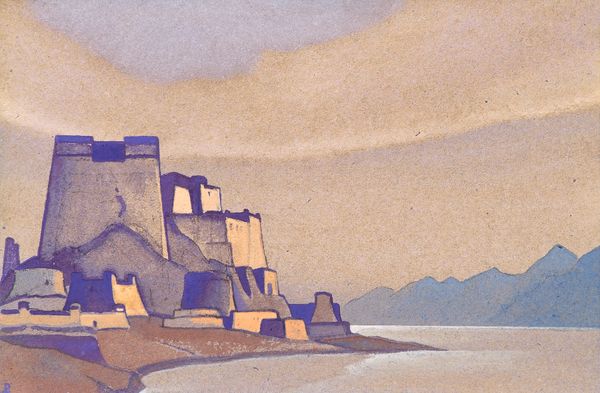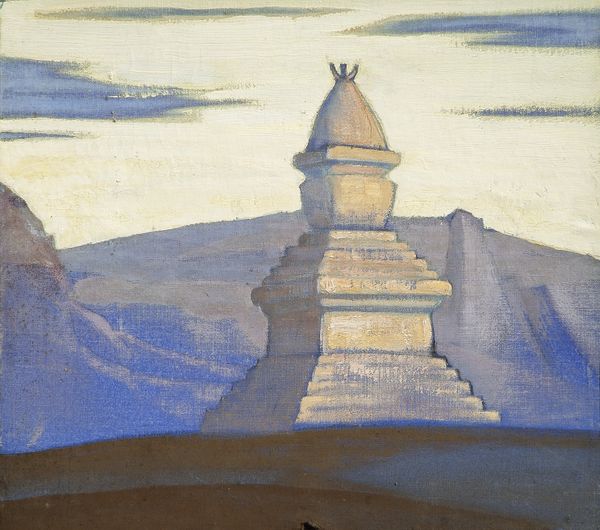
Copyright: Public domain
Curator: Nicholas Roerich created "Tibetian fortress" in 1936. The artwork is realized in tempera. Editor: The first impression is dreamy. The colour palette of pinks, blues and browns, it feels both ethereal and grounded. Curator: Roerich’s Orientalist works like this one often carry layers of sociopolitical commentary, don't they? "Tibetian Fortress", painted in 1936, exists at a volatile point in history as anxieties rise surrounding Soviet and Nazi expansion, yet seems indifferent to these looming conflicts. Editor: Absolutely, the way the forms are simplified and almost monumental invites us to consider the sheer weight of history—there’s a certain permanence about the fortress despite the dreamlike, ephemeral quality of the sky. Note the contrast in texture: the sky is smooth and almost featureless, while the mountain and fortress have a rougher, granular quality, probably the result of layering tempera paint. Curator: These fortresses had strategic importance, Roerich captures this silent enduring strength but also considers the cultural identity that intersects with this area during a rise in social consciousness towards Asian marginalization. This period coincides with growing political tensions in Asia and the rise of nationalist sentiments globally. It's also an incredibly violent time for marginalized groups due to an emergence of racist science theories of cultural heriarchy and racial capitalism. Editor: I can see that the artist really leans on simplification in composition to highlight both material and pictorial unity: everything from the brushstrokes to the colour relationships appear unified through what seems like a careful blending of hues and pigment consistencies. Curator: Considering Roerich’s ties to the Theosophical Society, this could be about humanity’s cultural endurance in face of political conflicts. It feels like an open challenge for the viewer to meditate on, especially for those aware of how geopolitics impact cultural expression. Editor: I agree. Ultimately, I think that the harmony between color and form provides an emotional resonance, transcending the boundaries of historical moment to offer contemplation on timelessness and durability. Curator: The artwork really underscores a larger reflection on the cultural dynamics inherent within geopolitics through form, doesn’t it?
Comments
No comments
Be the first to comment and join the conversation on the ultimate creative platform.
